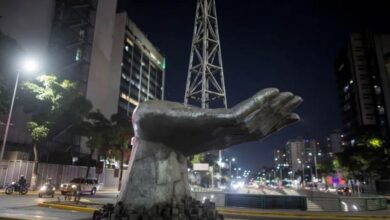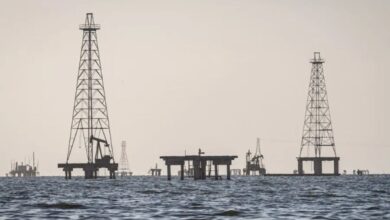Global Arms Trade, A Business That Continues To Grow Despite COVID-19
According to a study recently published by SIPRI, the global arms trade increased its sales despite the COVID-19 pandemic. How does this affect Latin American countries?.

Not even the economic crisis caused by Covid-19 has been able to stop the most powerful arms manufacturers in the world. Photo: Unsplash
LatinAmerican Post | Yolanda González Madrid
Listen to this article
Leer en español: Comercio mundial de armas, un negocio que sigue aumentando pese a la COVID-19
Not even the economic crisis caused by COVID-19 has been able to stop the world's most powerful weapons manufacturers. According to a report published in recent days by the Stockholm International Peace Studies Institute (SIPRI), for the sixth consecutive year there was an increase in the sales of the global arms trade, a scenario that has given It is to be understood that certain countries continue to give priority to investments in defense matters over other sectors.
The arms industry was able to withstand the blows of a world economy that contracted by 3.1% during the first year of the pandemic, managing to increase its sales to 531 billion dollars in 2020 or, in other words, a 1.3% more than the previous year. According to SIPRI data, the turnover of the 100 most important groups in the defense sector was 17% higher than in 2015, and this was largely due to the fact that "the giants of the industry were protected by the sustained demand for military goods and services by governments, "said Alexandra Marksteiner, a researcher at SIPRI's Military Expenditure and Arms Production Program.
Read also: Opinion: Brazil's Left Could Not Reinvent Itself
And it is that as expected, the United States again leads the ranking of countries with more companies (41) classified in the top-100, generating income as a whole of up to 1.9% compared to 2019 and representing 54 % of global arms trade listed. However, everything could have a change for 2021, since, despite the fact that the business continues to increase, the problems in the logistics of supplies reduced the activity of more than one company, not to mention that countries such as Russia have been reducing their sales for different reasons.
Global arms production was largely resilient against the #COVID19 pandemic and the resulting economic downturn. While the global #economy contracted by 3.1% in 2020, the aggregated arms sales of the Top 100 increased by 1.3%.
New SIPRI data out now https://t.co/7HtPTj00HX pic.twitter.com/JUuxdiEl0V
— SIPRI (@SIPRIorg) December 6, 2021
The military landscape in Latin America
The indebtedness of some Latin governments increased with the arrival of the pandemic. According to the Economic Commission for Latin America and the Caribbean (ECLAC) , this debt increased from 68.9% to 79.3% between 2019 and 2020 with respect to the Gross Domestic Product, figures that place all of Latin America as the most indebted region of the world. Precisely, this panorama has meant that several countries have had to stop their importation of weapons, although only in a very slight way.
The most notorious example of this collapse has Venezuela as the main protagonist. Its arms imports fell by as much as 93% compared to the last five years, according to SIPRI data. The Caribbean nation at the time was the largest buyer of military equipment in Latin America for almost a decade, but due to the pandemic added to the economic crisis that plagues them, the most notable acquisitions by President Nicolás Maduro were limited to nine aircraft training boats and four Ukrainian landing craft in recent years.
Likewise, it is worth mentioning that Mexico had to reduce its defense expenditures to 15% after several years of strong increases. The López Obrador government ranked third among the Latin American countries with the highest spending on weapons in 2020, knowing that these purchases are directly focused on combating drug trafficking in the region. For their part, South American nations such as Argentina, Uruguay, or Chile, showed very minimal, but important reductions, causing military spending in that part of the continent to fall by 2.1% in 2020.
In second place appears Colombia with an investment of just over 9 billion dollars, which represented a fall of 9.3% compared to 2019. Despite decreasing purchases, the figure is still high and this is due to the dynamics of crime and violence that the country is currently experiencing, a panorama that has resulted in the dissatisfaction of various political groups over-investment in weapons instead of prioritizing the costs of vaccination or the payment of health sector workers. It is worth mentioning that these expenses include military aircraft and the implementation of new weapons technologies in order to face unfortunate situations with neighboring countries.
Finally, Brazil is positioned as the Latin American country that remains the most active in the world arms trade. SIPRI data indicate that despite the fact that its imports fell by almost 3%, the Brazilian Armed Forces invested almost 20 billion dollars. To this should be added that President Jair Bolsonaro continues to preach a policy that has helped to increase the number of weapons in circulation in the country with the approval of several decrees, thus generating negative reactions among political leaders and entities linked to human rights for their desire to facilitate access to weapons for civilians instead of solving the health crisis and increasing the importation of vaccines.




